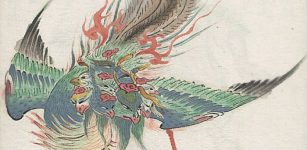What Is The Human Genome And How Big Is It?
MessageToEagle.com – What is the human genome and how big is it?
Our DNA (the famous double helix of deoxyribonucleic acid) contains all of our genes.
DNA, itself is made up of four chemical bases, pairs of which form the “rungs” of the twisted,
ladder-shaped DNA molecules.

These four molecules are adenine (A), thymine (T), cytosine (C), and guanine (G).
All genes are made up of stretches of these four bases (arranged in different ways and in different lengths).
A critical feature of DNA is the ability of the nucleotides to make specific pair, which are:
Adenine pairs with Thymine – A is complementary to T
Cytosine pairs with Guanine – C is complementary to G.
The DNA structure is due largely to hydrogen bonding between the base pairs, which link one
complementary strand to the other.
The human genome contains approximately 3 billion of these base pairs, which reside in the
23 pairs of chromosomes within the nucleus of all our cells. Each chromosome contains hundreds
to thousands of genes, which carry the instructions for making proteins.
Each of the estimated 30,000 genes in the human genome makes an average of three proteins.
22 of these are autosomal chromosome pairs, while the remaining pair is sex-determining.
MessageToEagle.com
Expand for referencessource: NHGRI
Related Posts
-
 Time Warp And Cloning Of Past Events – How Possible Is It?
No Comments | Dec 19, 2015
Time Warp And Cloning Of Past Events – How Possible Is It?
No Comments | Dec 19, 2015 -
 Emilia Plater: National Female Hero Of Polish And Lithuanian People
No Comments | Apr 21, 2017
Emilia Plater: National Female Hero Of Polish And Lithuanian People
No Comments | Apr 21, 2017 -
 The Carrington Event – Biggest Solar Storm In Earth’s History
No Comments | Aug 28, 2015
The Carrington Event – Biggest Solar Storm In Earth’s History
No Comments | Aug 28, 2015 -
 What Colors Can Newborn Babies See?
No Comments | Dec 30, 2015
What Colors Can Newborn Babies See?
No Comments | Dec 30, 2015 -
 10 Great Ancient Life Lessons From Buddha How To Change Your Life Rapidly
No Comments | Jul 16, 2015
10 Great Ancient Life Lessons From Buddha How To Change Your Life Rapidly
No Comments | Jul 16, 2015 -
 Pharaoh Hatshepsut: Skillful And Efficient Female Ruler Who Brought Prosperity To Ancient Egypt
No Comments | Mar 22, 2017
Pharaoh Hatshepsut: Skillful And Efficient Female Ruler Who Brought Prosperity To Ancient Egypt
No Comments | Mar 22, 2017 -
 The Word ‘Scientist’ First Appeared In 1833
No Comments | May 1, 2016
The Word ‘Scientist’ First Appeared In 1833
No Comments | May 1, 2016 -
 Three-Eyed Tuatara Is The Closest Living Relative To The Dinosaurs
No Comments | Jul 2, 2016
Three-Eyed Tuatara Is The Closest Living Relative To The Dinosaurs
No Comments | Jul 2, 2016 -
 Nine-Headed Bird: Mythical Creature Worshiped In Ancient China
No Comments | Oct 29, 2016
Nine-Headed Bird: Mythical Creature Worshiped In Ancient China
No Comments | Oct 29, 2016 -
 Advanced Ancient Technology – Talos A Greek Robot Created By The God Of The Forge
No Comments | Jun 28, 2014
Advanced Ancient Technology – Talos A Greek Robot Created By The God Of The Forge
No Comments | Jun 28, 2014

